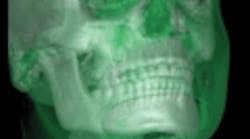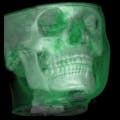Contemporary dental patients are savvy consumers. They want options; they want to understand their proposed treatment; they want great customer service, and they want it all NOW. Implementing state-of-the-art technology, such as 3-D imaging and CAD/CAM, gives dentists the ability to obtain that information and the capability to be the one-stop-shop for their patients. Statistics reported by the American Association of Oral and Maxillofacial Surgeons show that 69% of adults ages 35 to 44 have lost at least one permanent tooth to an accident, gum disease, a failed root canal, or tooth decay. Several options are available for tooth replacement, with dental implants continuing to grow in popularity. Other technological advances in dentistry, such as CBCT, guided surgery, and other CAD/CAM applications, are allowing general dentists and specialties alike to increase efficiency and offer a wider variety of treatment options for their patients.“As a general dentist, it is very exciting to be able to be able to merge these two technologies, and facilitate the implant process for my patients — to have an implant placed so precisely and correctly and to have a crown designed for the occlusally ideal spot, and to be able to merge all of that into one appointment is really critical,” says Kelowna, B.C.-based dentist Dr. Sharnell Muir, adding, “It is a service that they can’t get anywhere else.”
3-D Cone Beam Computed Tomography (CBCT) adds precision to planning and treatment of dental implants and other surgical procedures. The insights gained from having a “surgical view” when planning an implant, benefit both the dentist and the patient. Viewing the dentition in a 360-degree image that can be rotated or sliced and then viewed from any angle reduces and even eliminates “surprises” that interfere with successful implant placement.The advantages of 3-D imaging continue past the initial planning stages. Paired with CAD/CAM technology, CBCT facilitates a successful implant process from the 3-D radiographic scan to seating of an in-office milled implant restoration. The partnerships between 3-D powerhouses, Gendex, and i-CAT with D4D takes this process a step further: The ability to plan implants and the restorations in one software program, and to mill surgical guides in office, to provide the option of same-day final tooth replacement. Using Cone Beam scan data from the i-CAT® and GXCB-500™/500 HD™ within the E4D Compass™ software, dentists can simultaneously plan the implant and restoration, mill a surgical guide, place the implant, and then mill and place the permanent implant restoration--all within the office and in as little as one appointment.With so much competition in the dental marketplace, multi-faceted offices will gain the attention, and the business, of new patients. Combining technologies such as i-CAT and E4D helps dentists to gain confidence in their diagnosis and expanded treatments, is a visible, tangible way to distinguish your office from the competition, and delivers those sought-after options — NOW!







